New ways to cut insurance premiums
Digital disruptors put power in the hands of consumers
New short-term insurers are innovating, investing heavily in technology and building businesses that are more consumer-friendly than their old-school competitors.
With the uninsured market in their sights, newcomers also hope to poach policyholders from the more established insurers.
This week, Naked announced it has extended its offering to include homeowners cover (building insurance) and household contents cover. And Solvency has announced the introduction of a savings account that policyholders can use in a similar way to the one used by members of medical schemes.
Although the concept of a savings account attached to a short-term insurance policy is not new – Discovery Insure, for example, has offered an excess-funder account for many years – Solvency’s account is more accessible than Discovery’s, which is only available to policyholders who are members of the insurer’s Vitality Drive programme.
Launched in April 2018, Naked offers a completely automated digital process: you can obtain a quote and cover via the insurer’s award-winning app in under three minutes.
Ernest North, a co-founder of Naked, says the competitive premiums you pay is one of the insurer’s strongest selling points, with the cost saving coming largely from automation. Because it does not run “legacy systems” or manage a large call centre infrastructure, Naked can pass onto its customers significant premium savings.
“By cutting out costs, the savings for lower-valued policies will be biggest because our competitors can’t afford to sell contents cover for less than R250,000,” he says.
North says the insurer has put a lot of effort into building an app that helps policyholders understand and manage their cover.
To insure your car or household contents with Naked, you’re required to take a car or home “selfie” using the app. If the selfie reveals, for example, that you’ve opted to insure your contents for less than they are obviously worth, Naked will prompt you to insure at the right value so that you avoid the consequences of under-insurance.
“The selfie and feedback from the selfie minimises surprises at claims stage,” North says.
Policyholders can also claim from, manage, change and cancel their policies from the app, without the need to speak to a call centre agent.
Changes to your policy may include pausing your accident cover when your car is standing unused for days on end. You would do this to save on premium. “If you’re paying R600 a month for full comprehensive cover for your car and you switch over to stationary cover while it’s parked in the garage or in an airport parking bay, your premium will decrease to around R350 a month,” according to a blogpost by Naked, though it doesn’t state how many days the car would be off the road to enjoy that premium.
Empowering policyholders to save on their premiums is a compelling proposition for consumers who tend to feel let down when they are at their most vulnerable – at claims stage.
According to Solvency, 90% of policyholders pay more in premiums than they could ever claim, while subsidising the 10% multi-claimants who don’t manage their risk well.
The insurer’s savings account, which was launched last week, is designed to help policyholders use their insurance premiums to cover their excesses, taking some of the sting out of the claims process.
By default, 5% of the Solvency premium is allocated to the policyholder’s savings account, with the option to increase this up to 25% of your premium, depending on the excess you’ve opted to pay.
You earn interest at a rate of up to 7% a year.
This benefit gives you the flexibility to decide how much of your premium goes to fund risk and how much you self-insure. The more you decide to allocate to savings, the less goes to risk and the higher your excess will be.
Regardless of how you slice and dice your premium, it’s better than all of your premium going to risk, and getting nothing regardless of whether you do or don’t claim.
You may even choose to leave your money in your savings account longer than the 12 months you are obliged to leave it.
Money in your Solvency savings accounts belongs to you, not the insurer, and it’s paid out to you with interest if you cancel your cover, or if you need to claim and want to use it to subsidise the excess on your claim.
But over a 12-month period you can only draw up to 50% of the balance. This to ensure you have some savings to partially or wholly fund the excess should you need to claim.
Mutoda Mahamba, the chief executive officer and co-founder at Solvency, says that with Solvency’s savings accounts, money spent on insurance premiums is put to work for the direct benefit of consumers.
North says that what sets Naked apart is its business model. “Traditional insurers earn profit based on claims. On the day you try to claim, for every rand they pay out, their profit reduces. That’s not how Naked works: 80% of our premiums is used to pay claims. What’s left is paid to communities.
“We’ve capped our fee at 20% of premium. We engineered this to change the way we are incentivised. If something is a grey area, a traditional insurer will rule against you. We have no incentive to behave like that. Our incentive is to deliver insurance that doesn’t surprise you.”
